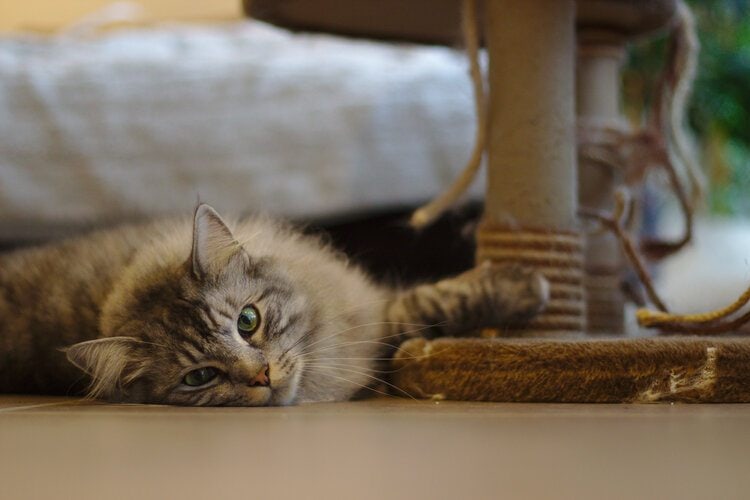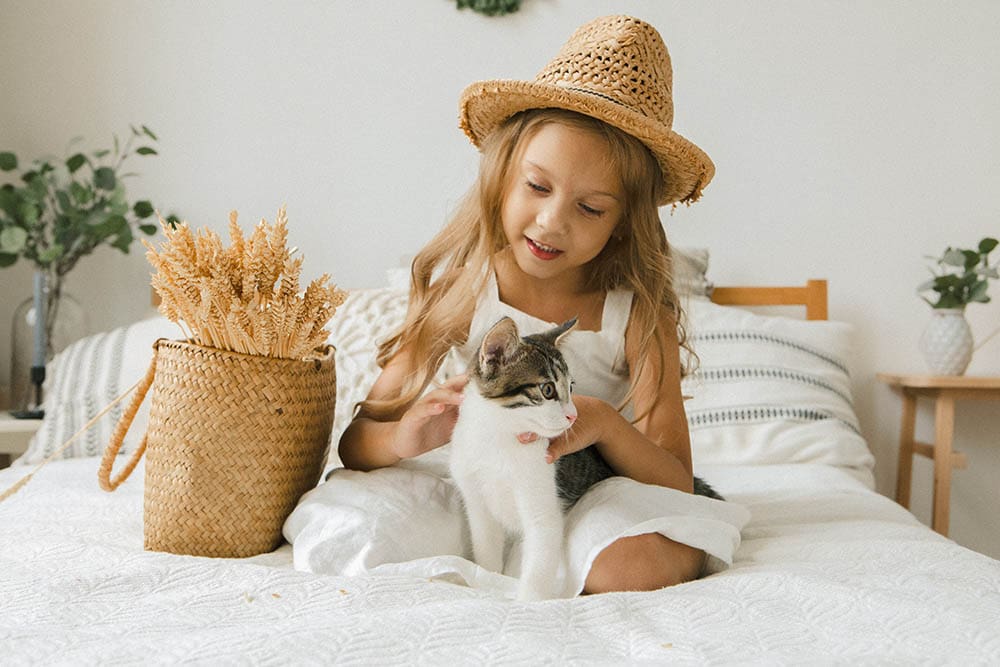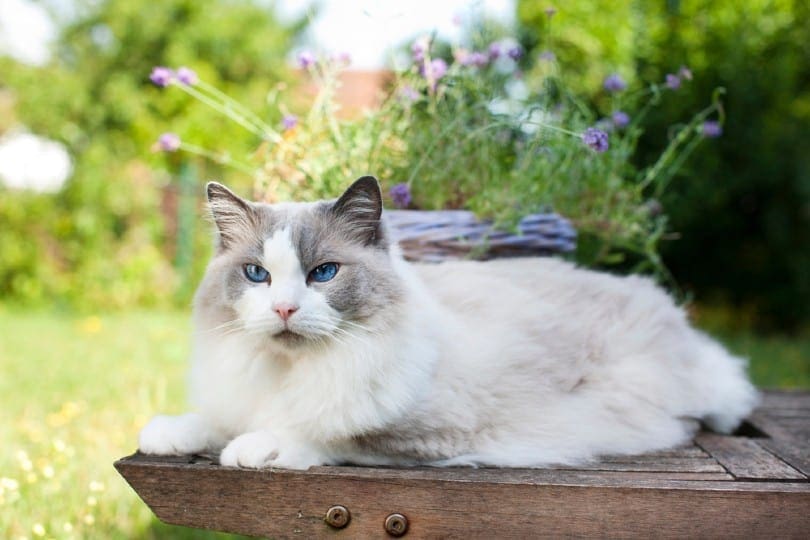
Have you ever sat down on your bed or sofa, only to have your cat jump up on your lap? Sometimes it seems like as soon as you start stroking them, they start to purr. Some cats purr gently and softly, while others sound like a racecar.
What is it that starts this purring? What is happening when your cat is sitting in the middle of the room purring for seemingly no reason? How does purring even happen, and why does it seem like cats can purr forever?
We answer all these questions and more in this article on why and how cats purr.
The 6 Reasons Why Cats Purr
1. They Are Happy
The most obvious reason that a cat purrs is that they are happy. A purr often signals that they are satisfied with the social interaction. This purr could be because they are happy around a human or with another animal friend of theirs.

2. They Feel Hungry
Many cats purr when they want something, mainly when they want to get fed. If you listen closely, you will likely hear a difference in how your cat purrs when they are happy and when they want something from you.
Domesticated cats have perfected the mealtime purr. This purr incorporates their typical purring sound with a less pleasant mewing frequency. It mimics the tone and pitch of a baby’s cry, which is an instinctive signal for humans. Cats know that we are more likely to respond to this sound.
3. They Want to Let Their Mother Know That They Are Okay
Kittens purr while they feed or are near their mothers to let them know that they are doing fine. The purring helps them bond with their mother. Mother cats also purr back to their kittens as a form of a lullaby to help them feel comfortable and settle in.
That is why you will often hear tiny purrs coming from feeding kittens and the mother cat gently purring back now and then.

4. They Are Upset and Want to Comfort Themselves
Although this hasn’t been firmly proven, a cat in pain or scared will purr to comfort themselves. When a cat is upset, they often start to purr. They do this to make themselves feel better and let the other party know that they are not a threat.
5. They Are Signaling Peaceful Intentions
Cats that don’t want a fight will often purr when approaching another cat. Whether they are friends or strangers, they purr upon approach to signal a white flag. They aren’t interested in scratching it out. They just want to say hi. You will often hear this happen when an older, more frail cat approaches a younger, agile one.

6. They Are Healing Themselves
One of the most notable reasons that a cat purrs has only been discovered recently. Interestingly, it supports century-old veterinary myths about cats being able to heal themselves. When a cat purrs, they can reach frequencies ranging between 25 and 150 hertz.
These sound frequencies have been proven to improve bone density and function as a natural healing mechanism. Studies have been done to find that purring can relieve pain, repair bones, and heal the cat’s wounds.
This is an instinctual reason that cats seem to purr when they are in pain. Each purr functions as a low dose of pain reliever while their body knits itself back together.
This behavior can be mistaken for cat lethargy, though in this case, there is generally no need to be worried. Your kitty just needs some time to get back to the purrfect state
How Do Cats Purr?

Now that you have a better idea of the reasons that a cat can purr, you might want to know how they do it. For humans to make that sound, it takes concentration, and it dries our throats out quickly. Happy cats, on the other hand, could seemingly purr for days.
A cat starts to purr when their brain sends signals down to their voice box, or larynx. The muscles in the larynx respond to these signals by vibrating. The muscles act as a valve and open and close the cat’s vocal cords, allowing air to come out and with it, the purring noise.
Because of this, cats can purr when they breathe in and out. The method isn’t entirely linked to their respiratory system, though.
What instigates a cat’s purr is still a topic of wide debate in the world of animal researchers. Some scientists theorize that cats purr because of a release of endorphins from their brains. That makes sense when they purr because they are happy or relaxed, but what about all those other times?
Another theory is that a cat’s purr is an entirely voluntary use of the nervous system. That means they can purr whenever they want to in order to signal to the people around them about how they feel. That sounds like a cat, doesn’t it?
The final modern theory is that specific brainwaves or rhythmic patterns of neural activity trigger the cat to purr in varying instances.
Fun Fact: Not All Cats Purr
Cats in the Pantherinae family can’t roar. These include large cats like lions and tigers. Instead of purring, they roar. Their genetics changed from their common ancestor, making it so they don’t have the right processes and muscles to make a purr happen. Specifically, their epihyal bone got replaced by a ligament, which made all the difference.
Most of the other cats in the world do have the capacity to purr. All domestic cats can purr. There are also many big cats outside of the Pantherinae family that can purr but can’t roar. Those include wild cats like:
Scientists theorize that a cat’s ability to roar or purr comes from their survival needs. Big cats in the wilderness, like the savannah, roar to mark out their territory and warn off predators.
Smaller “large” cats, like cheetahs and wildcats, that can’t roar evolved differently because of their function in the ecosystem. Instead of marking out a territory, they roam and wander, following their food throughout the tundra.
Summary
Now you’ve learned that cats purr for all sorts of reasons, and you know how they purr. The next time you sit down to have a cuddle session with your kitty, you will have more insight than ever into why cats do what they do.
See also:
- How Old Are Kittens When They First Walk?
- Does My Cat Only Purr for Humans? Why or Why Not?
- My Cat Is Breathing Faster When They Purr, Is That Normal?
Featured Image Credit: EbneRol, Shutterstock








